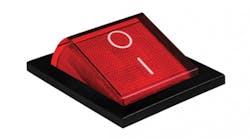Karen Savage is no stranger to long lead times on electronic components, but when she recently learned that a specific switch was going to take 10-12 weeks from order to delivery, she couldn’t believe her ears.
“It was just a simple switch that we hadn’t had any issues with in the past,” says Savage, senior buyer with A&D Technology, Inc., in Ann Arbor, Mich.
As a manufacturer and designer of engine testing solutions, the company relies on a steady stream of circuit boards, switches, and computer equipment. When the lead times on such products are long—in this case, by nearly three months—Savage either has to source the items elsewhere or risk project delays.
Around the same time that Savage was grappling with the switch issue, a few other component makers were dealing with some growing pains of their own.
“It was a compound issue,” says Savage. And, as it happens, this “perfect storm” occurred right around the time that some of A&D’s customers were scrambling to spend the remaining pieces of their fiscal-year budgets.
“Many of our customers have a ‘use it or lose it’ mentality when it comes to budgeting,” says Savage. “We can’t just tell them that we’re going to deliver in February on an order that they placed with us for December; it doesn’t work that way.”
Taking the initiative, Savage started looking to other sources for the switch in question.
“The item didn’t seem that special to me,” she says, “so I looked to brokers all over the world and no one had any stock, consignment stock, or even resale stock at all on this switch.”
In the end, Savage says A&D was able to get the switches within an 8-week timeframe.
“I was ecstatic when we received them,” she says, noting that in some cases the specialized nature of the manufacturer’s business comes into play when sourcing components. “We don’t do a huge volume of any specific item because we’re so specialized, but in this case our supplier was able to push the order through and make the switches for us within a shorter time frame.”
In looking at the broader global purchasing picture now, Savage says she’s keeping an eye on proposed interest rate increases and some other issues that could affect both product availability and pricing in 2015.
“Even the Federal Reserve can’t figure out whether the economy is growing fast enough and/or if the growth needs to be slowed down,” says Savage. “If you’re a chip builder right now—and if you want to run 50,000 units of a specific chip—you’re probably not going to make the investment if there aren’t any customers waiting for those items,” says Savage. “Without a good forecast, you may wind up building 10,000 instead of the intended 50,000 units.”
That scenario could, in turn, result in tighter available quantities and higher prices, particularly if system builders decide to hold off on “stocking up” on electronic components.
“With technology, you don't want pieces sitting on the shelf in [inventory],” says Savage. “When you don't know that there's a sufficient demand, no one wants to go out on a limb and say, ‘I'm ready to take an order and I'm going to build these up right now,’ because it just doesn't make sense.”
In terms of current component pricing, Savage says that for the most part costs are either remaining steady or rising slowly.
“I don’t see anything dropping unless it was for a specific spot buy,” says Savage. “For the most part, I have my ordering set up for continuous orders in lot size, so I'm keeping my buys at routinely the same price.”
Finally, she says she’s started reviewing invoices and agreements to ensure good future supply or to find alternative sources of supply (if necessary).
“As buyers, we have to watch and assess bill health to make sure that when the market does pick up, we’re talking to our manufacturers about issues like component availability,” says Savage. “In some cases, the only way to find out whether a part is still available is by checking proactively and ensuring good communication through our supply chain.”








